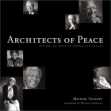
The best way to understand Gandhi's philosophy of nonviolence is to first understand the extent of the violence we practice, consciously or unconsciously, every day of our lives. My grandfather, Mohandas Karamchand Gandhi, made me aware of the violence in society, including the violence within myself, by asking me to work on a family tree of violence, using the same principles as a genealogical tree.
"Violence has two children," he said, "the physical and passive forms. Now, every day before you go to bed I would like you to write under each heading everything you experienced during the day and its relationship with violence."
I had to honestly write down my own acts of violence during the day. This meant that every night I had to analyze my actions. If I found them to be violent, then the act had to be identified as such. It was an excellent way of introspection and acknowledgment of one's own violence.
Denying Our Own Violence
We generally deny our own violence because we are ignorant about it or because we are conditioned to look at violence only in its physical manifestation -- wars, fighting, killing, beating, rapes -- where we use physical force. We don't, however, consider oppression in all its forms -- name-calling, teasing, insulting, disrespectful behavior -- as passive forms of violence.
The relationship between passive violence and physical violence is the same as the relationship between gasoline and fire. Acts of passive violence generate anger in the victim, and since the victim has not learned how to use anger positively, the victim abuses anger and generates physical violence. Thus, it is passive violence that fuels the fire of physical violence, which means if we wish to put out the fire of physical violence we have to cut off the fuel supply.
The Pursuit of Truth
The greatest challenge in promoting nonviolence is the English language and its limitations. The next is our perception, rooted for centuries, that violence is the only way we can resolve our problems.
When my grandfather developed his philosophy of nonviolence in South Africa and wanted an appropriate word to describe it, he could not find one. He rejected "passive resistance" and "civil disobedience," saying there was nothing passive or disobedient about the movement. He even offered a reward to anyone who could come up with a positive English word to describe what he had in mind. Alas, no one could.
Gandhi decided a Sanskrit word might be more appropriate, as he was planning to move back to India and lead the Indian struggle for freedom. He found satyagraha, a combination of two Sanskrit words, described his philosophy the best: satya, meaning "truth," and agraha, meaning "the pursuit of." Thus, satyagraha means the pursuit of truth, the opposite of the Western concept of possessing the truth.
Nonviolence, therefore, can be described as an honest and diligent pursuit of truth. It could also mean the search for the meaning of life or the purpose of life, questions that have tormented humankind for centuries. The fact that we have not been able to find satisfactory answers to these questions does not mean there is no answer. It only means we have not searched with any degree of honesty. The search has to be both external and internal.
We seek to ignore this crucial search because the sacrifices it demands are revolutionary. It means moving away from greed, selfishness, possessiveness, and dominance to love, compassion, understanding, and respect. It means that to be true to our faith and religion, it is not enough to pray ten times a day. Rather we must make the Scriptures the basis of our existence.
Because of our materialistic, greedy lifestyle, we have become very possessive. We seek to possess not only material goods but even our spiritual beliefs -- even peace, if we find it. How many times have we heard people say, "I am at peace with myself," or gurus say to their devotees, "find your peace and hold on to it." Can anyone find peace or spiritual awakening and hold on to it for themselves?
The Meaning of Peace
Grandfather liked to tell us the story of an ancient Indian king who was obsessed with finding the meaning of peace. What is peace? How can we get it? And what should we do with it when we find it? These were some of the questions that bothered him.
Intellectuals throughout his kingdom were offered a handsome reward to answer the king's questions. Many tried but none succeeded. At last, someone suggested the king consult a sage who lived just outside the borders of his kingdom.
"He is an old man and very wise," the king was told. "If anyone can answer your questions he can."
The king went to the sage and posed the eternal question. Without a word the sage went into his kitchen and brought a grain of wheat to the king.
"In this you will find the answer to your question," the sage said as he placed the grain of wheat in the king's outstretched palm.
Puzzled but unwilling to admit his ignorance, the king clutched the grain of wheat and returned to his palace. He locked the precious grain in a tiny gold box and placed the box in his safe. Each morning, upon waking, the king would open the box and look at the grain seeking an answer, but he could find nothing.
Weeks later another sage, passing through, stopped to meet the king, who eagerly invited him to resolve his dilemma.
The king explained how he had asked the eternal question but was given a grain of wheat. "I have been looking for an answer every morning but I find nothing."
"It is quite simple, your honor," said the sage. "Just as this grain represents nourishment for the body, peace represents nourishment for the soul. Now, if you keep this grain locked up in a gold box it will eventually perish without providing nourishment or multiplying. However, if it is allowed to interact with the elements -- light, water, air, soil -- it will flourish and multiply, and soon you would have a whole field of wheat to nourish not only you but so many others. This is the meaning of peace. It must nourish your soul and the souls of others, and it must multiply by interacting with the elements."
The Essence Of Gandhi's Philosophy Of Nonviolence
This is the essence of Gandhi's philosophy of nonviolence, or the pursuit of truth. In the lifelong pursuit of truth we must always be guided by love, compassion, understanding, and respect. We must allow everything we have to interact positively with the elements and help create a society of peace and harmony. The more possessions we have, the more we have to secure them from those who covet them. This generates feelings of jealousy and leads the needy to resort to taking by force what they cannot get through love and the compassion of the rich.
The choice before humanity, to quote Gandhi's words, is quite simple: We have to be the change we wish to see. Unless we change individually, no one is going to change collectively. For generations we have been waiting for the other person to change first. A change of heart cannot be legislated; it must come out of conviction.
Reprinted with permission of the publisher,
New World Library. ©2000.
www.newworldlibrary.com
Article Source
Architects of Peace: Visions of Hope in Words and Images
by Michael Callopy.
 Seventy-five of the world’s greatest peacemakers — spiritual leaders, politicians, scientists, artists, and activists — testify to humanity’s diversity and its potential. Featuring 16 Nobel Peace Prize laureates and such visionaries as Nelson Mandela, Cesar Chavez, Mother Teresa, Dr. C. Everett Koop, Thich Nhat Hanh, Elie Wiesel, Archbishop Desmond Tutu, Coretta Scott King, Robert Redford, and more, the book profiles figures often working at the very nucleus of bitter conflicts. 100 black-and-white photos are included. "Architects of Peace honors a broad, eclectic mix of people whose efforts have enriched our planet." — San Francisco Chronicle
Seventy-five of the world’s greatest peacemakers — spiritual leaders, politicians, scientists, artists, and activists — testify to humanity’s diversity and its potential. Featuring 16 Nobel Peace Prize laureates and such visionaries as Nelson Mandela, Cesar Chavez, Mother Teresa, Dr. C. Everett Koop, Thich Nhat Hanh, Elie Wiesel, Archbishop Desmond Tutu, Coretta Scott King, Robert Redford, and more, the book profiles figures often working at the very nucleus of bitter conflicts. 100 black-and-white photos are included. "Architects of Peace honors a broad, eclectic mix of people whose efforts have enriched our planet." — San Francisco Chronicle
Info/Order this book. Available in paperback and hardcover.
Another book with the photography of Michael Callopy:
Works of Love Are Works of Peace: Mother Teresa of Calcutta and the Missionaries of Charity.
About the Author
Arun Gandhi is the fifth grandson of India's late spiritual leader Mohandas Karamchand "Mahatma" Gandhi. In 1946, when he was 16, just before India gained independence from Britain, Arun's parents took him to live with his grandfather for eighteen months. Arun and his wife, Sunanda, came to the United States in 1987 and in 1991 founded the M. K. Gandhi Institute for Nonviolence in Memphis, Tennessee. www.gandhiinstitute.org.
Books by Arun Gandhi
at InnerSelf Market and Amazon























